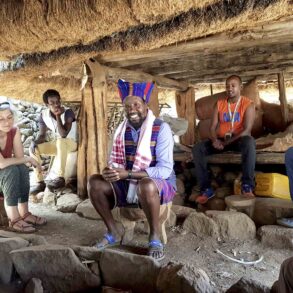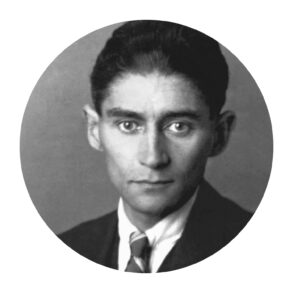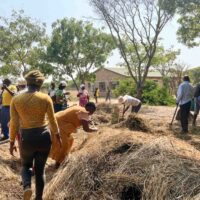On the new Convention on International Trade in Endangered Species of Wild Fauna and Flora – hopes and challenges.
The 15th Convention on Biodiversity, adopted by 196 nations in Montreal in December 2022, is, at first glance, a breakthrough. Thirty percent of all lands and oceans are to be placed under protection by 2030, and the rights of the indigenous population, who often live in the regions most worthy of protection, are to be secured. Therefore, these people are allowed to stay in protected areas because their presence does not endanger nature but promotes it. However, preserving natural diversity in the lands and oceans we use is also crucial. For example, it is demanded that about 30 percent of the most destroyed agriculturally and industrially used or inhabited areas must also be restored.
What is the agreement worth? Everything depends on whether and how binding it is implemented in rich countries. It is not a question of whether they can; but about keeping a promise they made. The difficulties have already begun with financing. Although according to experts, about 100 billion euros have to be made available annually, it is already considered a success if it is 30 billion. How the funds actually get to the destinations and groups is an unsolved problem. In addition, there is a phenomenon that a priestess described as the «inflation of words» at the celebrations of the Christian Community in Dortmund. She did not speak of species extinction but of the non-commitment with which things are said or even promised today that are no longer valid after a short time. What can be done about it?
Everything Is Related
Whether we want to admit it or not: we humans are entirely integrated into the relational structure of non-human nature. All plants give animals and humans the oxygen necessary for life, and with each exhalation, they return the carbon dioxide required for the plant world.
The extinction of plant and animal species has far-reaching consequences for the health of human beings and the Earth. The disappearance of amphibians promotes the reproduction of mosquitoes, which can subsequently lead to an increased spread of malaria. The use of herbicides and pesticides in agriculture directly destroys nature’s wise web. If there are too few seeds of wild herbs and too few insects and insect larvae, birds and small mammals starve – not to mention the deterioration of drinking water quality with direct consequences for human health.
Rudolf Steiner makes it clear how important the diversity of habitats is for the health of the Earth, especially in the sixth lecture of the agricultural course. He speaks of naturally intimate interactions. The Koliskos rightly titled their book on biodynamic agriculture ‹Die Landwirtschaft der Zukunft› [The Agriculture of the Future]. Agricultural practice and spirituality are not contradictory but can complement each other in a necessary and meaningful way.

We’re Extinguishing a Major Fire
This brings me to a concern that was clearly addressed at COP 15, which Greta Thunberg also mentions in her climate book. According to this, it is not about the personal, individual transformation of consciousness. What is needed is a systemic change in society as a whole. In Anthroposophical circles, however, this is often described as irrelevant. One can justifiably doubt whether, given the threatening climate and biodiversity problems – the extinction of one species is happening a thousand times faster than the emergence of a new one – people have enough time to develop their ecological awareness and put it into practice. And it will be demanded with a particular justification that political leaders and corporate executives must work together to shape the necessary restructuring of agriculture, energy production, and resource extraction in a sustainable way. But why should they? Can they do it without an individual inner transformation? I don’t think so.
The representatives of the indigenous peoples, who make up about five percent of the world’s population, prove daily that their work does not destroy nature but even improves it. And they tell, if you want to hear it, that they arrange their everyday life with an ethos, one may well say, in an inner conversation with the spirits who «inhabit» mountains, rocks, rivers, water, plants, and animals.
We cannot return to this form of consciousness, as Rudolf Steiner emphasizes again and again. We must refrain from delegating the solution of the immense tasks to single individuals, to ourselves personally. The system change is as urgent as the work of a fire brigade extinguishing a major fire. But without a transformation of mind, there is no long-term survival of human beings and the Earth! Praying is one option, meditation another. We learn that a first step on the training path leads to the insight into how all beings of nature and humans are intimately related – that we are all ethereally connected. When we destroy the external, something breaks inside us. Our most minor actions are associated with significant world events.1 Only a few have already come to this conclusion. But we have to ask ourselves daily whether and in what form our spiritual life becomes effective in our everyday lives. If not, we’re doing something wrong. Following Rudolf Steiner, it is truer today than ever: love is knowledge, and meditation leads to action.














I appreciatie being able to read the articles in The Goetheanum Weekly. They help to inform me of important activities inspired thru Anthroposophy taking place in various places on the globe. This offers being “spiritually” connected. And offers me the possibility of(financially) supporting in word or deed. That is the reason that I subscribed for the whole year of 2023!